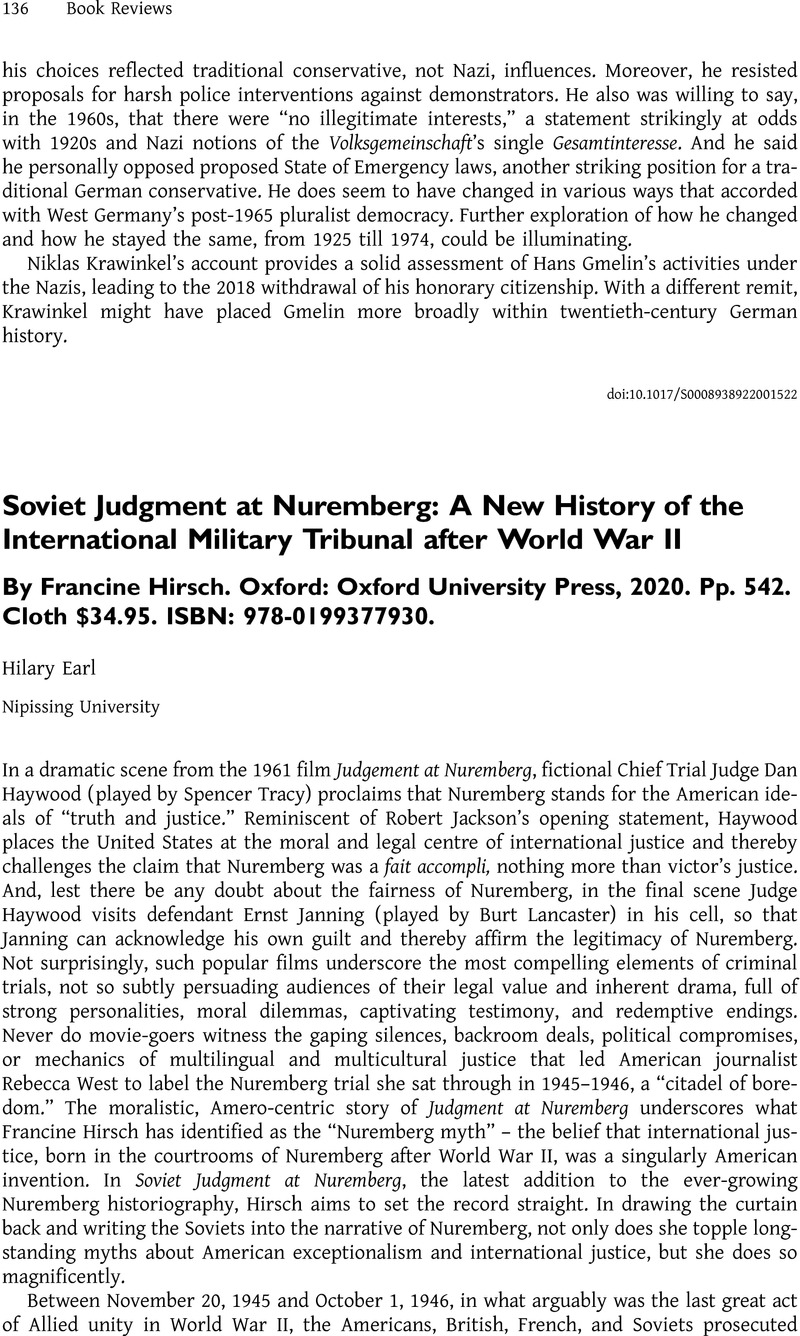No CrossRef data available.
Article contents
Soviet Judgment at Nuremberg: A New History of the International Military Tribunal after World War II By Francine Hirsch. Oxford: Oxford University Press, 2020. Pp. 542. Cloth $34.95. ISBN: 978-0199377930.
Review products
Soviet Judgment at Nuremberg: A New History of the International Military Tribunal after World War II By Francine Hirsch. Oxford: Oxford University Press, 2020. Pp. 542. Cloth $34.95. ISBN: 978-0199377930.
Published online by Cambridge University Press: 24 March 2023
Abstract
An abstract is not available for this content so a preview has been provided. Please use the Get access link above for information on how to access this content.

- Type
- Book Review
- Information
- Copyright
- Copyright © The Author(s), 2023. Published by Cambridge University Press on behalf of Central European History Society of the American Historical Association


